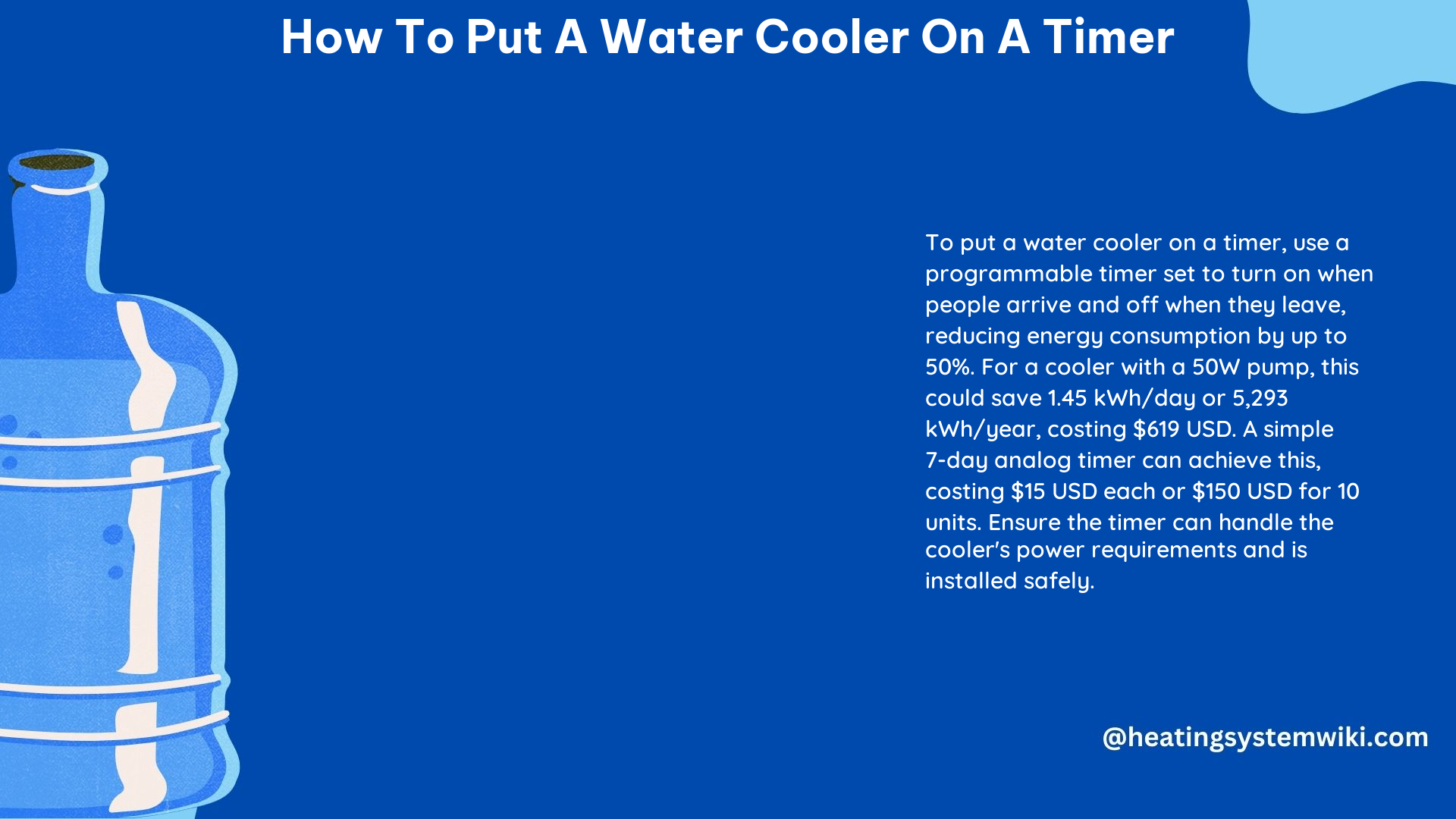Putting a water cooler on a timer is an effective way to save energy and water while ensuring your office or home stays hydrated. By controlling the power supply to the cooler, you can optimize its usage and reduce your overall energy and water consumption. In this comprehensive guide, we’ll walk you through the step-by-step process of setting up a timer circuit for your water cooler, covering the technical specifications, installation, and safety considerations.
Choosing the Right Timer Circuit
The first step in putting your water cooler on a timer is selecting the appropriate timer circuit. This circuit will be responsible for switching the cooler on and off at the desired intervals. When choosing a timer circuit, consider the following factors:
- Voltage: The timer circuit must be rated for the same voltage as your water cooler’s power supply, which is typically either 110V or 220V.
- Current: The timer circuit should be able to handle the same current as your water cooler, which can range from 10A to 15A, depending on the model.
- Switching Frequency: The timer circuit should be able to switch the cooler on and off at the desired frequency, such as every 15-20 minutes.
- Power Consumption: The timer circuit should have a low power consumption to avoid adding significant load to the cooler’s power supply.
- Safety: The timer circuit should be designed and installed with safety in mind, including proper wiring, insulation, and grounding.
You can either purchase a pre-made timer circuit or design your own using a 555 timer or a microcontroller. If you choose to design your own, make sure to carefully consider the technical specifications and safety requirements.
Installing the Timer Circuit

Once you have the timer circuit, the next step is to install it. Here’s a step-by-step guide:
- Locate the Power Cord: Find the power cord of your water cooler and disconnect it from the power outlet.
- Connect the Timer Circuit: Connect the timer circuit in between the power outlet and the cooler’s power cord. Ensure that the connections are secure and properly insulated.
- Set the Timer: Set the timer to switch the cooler on and off at the desired frequency, such as 2-3 minutes on and 15-20 minutes off.
- Test the Cooler: Plug the cooler back into the power outlet and test it to ensure that it’s working properly.
- Secure the Timer: Secure the timer circuit to prevent any accidents or injuries.
When connecting the timer circuit, be sure to follow all safety protocols and use appropriate tools and equipment. Proper wiring and insulation are crucial to prevent any electrical hazards.
Technical Specifications
To ensure the successful installation and operation of your water cooler timer, here are the key technical specifications to consider:
- Voltage: The timer circuit should be rated for the same voltage as your water cooler’s power supply, which is typically either 110V or 220V.
- Current: The timer circuit should be rated for the same current as your water cooler, which can range from 10A to 15A, depending on the model.
- Switching Frequency: The timer circuit should be able to switch the cooler on and off at the desired frequency, such as every 15-20 minutes.
- Power Consumption: The timer circuit should have a low power consumption to avoid adding significant load to the cooler’s power supply.
- Safety: The timer circuit should be designed and installed with safety in mind, including proper wiring, insulation, and grounding.
By carefully considering these technical specifications, you can ensure that your water cooler timer is compatible with your cooler and operates safely and efficiently.
Safety Considerations
When installing a timer circuit for your water cooler, it’s crucial to prioritize safety. Here are some key safety considerations to keep in mind:
- Electrical Safety: Ensure that all electrical connections are secure and properly insulated to prevent any risk of electric shock or fire.
- Overload Protection: Make sure the timer circuit is rated for the correct voltage and current to prevent overloading and potential fire hazards.
- Grounding: Properly ground the timer circuit and the water cooler to minimize the risk of electrical accidents.
- Placement: Position the timer circuit in a safe and accessible location, away from any water sources or high-traffic areas.
- Maintenance: Regularly inspect the timer circuit and the water cooler for any signs of wear or damage, and address any issues promptly.
By following these safety guidelines, you can ensure that your water cooler timer is installed and operated in a safe and responsible manner.
Conclusion
Putting a water cooler on a timer is an effective way to save energy and water while keeping your office or home hydrated. By carefully selecting the right timer circuit, following the installation steps, and considering the technical specifications and safety requirements, you can create a reliable and efficient water cooler timer system. Remember to always prioritize safety and consult with a professional if you have any doubts or concerns during the installation process.
